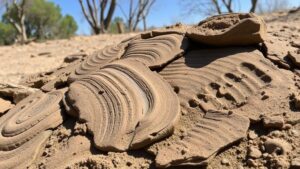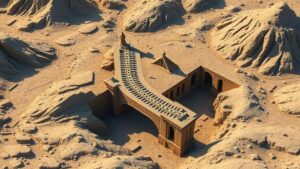Using Natural Landmarks in Historical Records to Identify Hidden Treasure Caches
Using Natural Landmarks in Historical Records to Identify Hidden Treasure Caches
The pursuit of hidden treasure has fascinated humanity for centuries. Whether spurred by tales of pirates, stories of lost civilizations, or the prose of literary giants, treasure hunting remains a compelling endeavor. This article explores the methodologies employed in utilizing natural landmarks detailed in historical records as a means to identify potential treasure locations, particularly in prehistoric and historic contexts.
Understanding Natural Landmarks
Natural landmarks are prominent geographic features that have been used for navigation and orientation throughout human history. include mountains, rivers, rock formations, and other distinctive natural phenomena. These features not only serve as points of reference but also often carry historical and cultural significance.
For example, the Mississippi River has often been cited in 19th-century journals as a navigation point used by riverboat captains, and these journals may hint at places where cargo, including gold and silver, were cached. Accurate identification of these landmarks is crucial for contextualizing historical records where treasure may have been hidden.
Historical Context and Documentation
Historical records can be broadly categorized into various forms, such as maps, diaries, anecdotal accounts, and official documents. Historians and archaeologists employ these documents to piece together the patterns of human behavior, movement, and economic activity.
- Maps: Historical maps can reveal routes traversed by explorers and traders, highlighting significant landmarks that could indicate hidden caches.
- Diaries: Personal accounts often reference nearby geographical features that may reveal the locations of items buried or hidden for safekeeping.
- Anecdotal Accounts: Folk stories and local legends frequently provide clues to treasure locations linked with specific natural landmarks.
Case Studies
Examining specific historical instances where natural landmarks played a significant role in treasure caching can illustrate the application of these methodologies.
The Lost Treasure of the Great Train Robbery
In 1870, a gang of outlaws in the United States stole a significant sum of gold and cash from a train traveling from San Francisco to New York. Historical accounts and investigative reports indicate that the robbers used Mount Shasta in California as a landmark, referencing it in their discussions of where to conceal their loot. Despite extensive searches over the decades, the treasure remains unfound, partially due to the extensive, rugged terrain surrounding the landmark.
Spanish Gold in the Florida Keys
During the late 16th century, Spanish explorers frequently traveled through the Florida Keys, often caching their gold and silver when threatened by pirates. Historical documents detail the use of the distinctive shape of the Dry Tortugas–particularly the recognizable Sand Key–as a navigational aid. Treasure hunters today use these documents to direct their searches and have had varying success based on the accuracy of these historical references.
Methodologies for Treasure Identification
Utilizing natural landmarks involves various multidisciplinary approaches, combining archaeology, history, and modern technologies.
- Geolocation Technology: GPS and GIS technologies allow for precise navigation and positioning based on historical data.
- Ground Penetrating Radar (GPR): This non-invasive technology enables treasure hunters to identify buried items without disturbing the earth.
- Historical Coin and Artifact Detection: Metal detectors can be employed in locations pinpointed using historical references linked to physical landmarks.
Challenges and Ethical Considerations
While the quest for treasure can be exhilarating, it is met with various challenges. Legal issues surrounding property rights and the management of archaeological sites pose significant barriers. Plus, there are ethical considerations regarding the excavation of historically significant sites that may contain artifacts necessary for scholarly study.
Conclusion and Future Directions
The integration of natural landmarks into the search for hidden treasure caches provides both exciting opportunities and noteworthy challenges. As technology advances, the methodologies used in historical documentation and archaeological exploration continue to sharpen, offering new insights into humanity’s past.
As a result, future research should focus on synthesizing interdisciplinary data to enhance the accuracy of treasure identification methods, promoting responsible practices that respect historical sites. Treasure hunting, when conducted ethically, fosters a deeper understanding of cultural heritage while potentially unearthing lost artifacts that contribute to the tapestry of human history.
In summary, harnessing the power of natural landmarks through rigorous historical analysis not only aids in the identification of hidden treasure caches but also enriches our understanding of the movements and behaviors of those who came before us.



